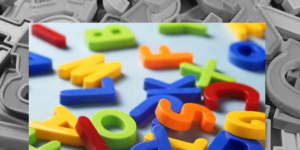11.16.23Foundational Literacy Isn’t Easy But Dayla Bedford Shows the Way

Definitely NOT kids’ stuff…
This week Jen Rugani and I have been presenting our first iteration of a new workshop, Foundational Literacy.
Why a Foundational Literacy workshop?
There’s been a massive and important migration towards structured literacy programs with systematic and synthetic phonics in the primary grades. That’s a good thing. (Heavy debt of gratitude here to Emily Hanford and her Sold a Story podcast).
But a better reading program is not enough. The program has to be taught well, too, with precision and energy and pace, if we want to see transformational reading outcomes. And that is surprisingly hard.
Surprising, we say, because, foundational reading, which is heavy on repetition and direct instruction, seems so easy.
It is anything but. The body of knowledge students have to master on the way to fluent expressive reading–44 letter sounds, 74 consonant blends and more than 125 digraphs, for starters—is an order of magnitude larger than any other body of information our youngest students have to master. And they have to know it all. And know it cold. So the details–how we cause high quality practice where we assess student progress effectively and keep the energy level high—matter and are not easy to master.
In light of that, consider the this short clip of Dayla Bedford, a first grade teacher at Emma Donnan Elementary School in Indianapolis, IN.
To us, Dayla is crushes the details. The practice is efficient and productive; joyful and lively. And Dayla’s ability to make it look easy is absolutely deceptive.
Some Key Points:
- One of the crucial things Dayla does is to vary her Means of Participation between whole group and individual response. The overall ratio is roughly one to one but who, when remains unpredictable. The whole group responses give everyone practice and keep the energy and engagement high; the cold calls ensure loving accountability for all students (attentiveness is SO important) and give some students extra work on sounds they need to practice.
- Speaking of attention, notice how hard—but efficiently and subtly—Dayla works to ensure student attention, especially keeping their eyes on the letter card. If students are not looking at the letter when they make the sound they are not practicing decoding.
- Her participation routines keep the energy high in part because her cueing is so crisp and consistent. (Just Mason; Everybody; Just Daniel; Everybody; Rayshawn, Go; Everybody; Just Maya; Everybody; Just Jo-osh). She keeps to a steady, predictable rhythm, drawing out names in a sing-song style when necessary to maintain the beat. The importance of this is easy to overlook. When there is a rhythm people join with it, simply, happily and un-selfconsciously.
- And speaking of routines, because the students all answer precisely on-cue she can hear better what sounds they actually make! This is a huge deal. Dayla crushes the “forensic listening” (listening for precise details of sound formation) in part because the on-cue responses make it easier for her to hear.
- Lastly the joy and positivity are unmistakable. In addition to her other routines, Dayla has fast easy affirmations for students when she needs to correct them or when they are correct so they feel successful and motivated to learn. Because her own moves are habit–a routine–for her, she can lead with little load on her working memory and she can use her conscious thinking to listen carefully or smile and affirm students.
Go, Dayla and thanks for sharing your teaching with us!